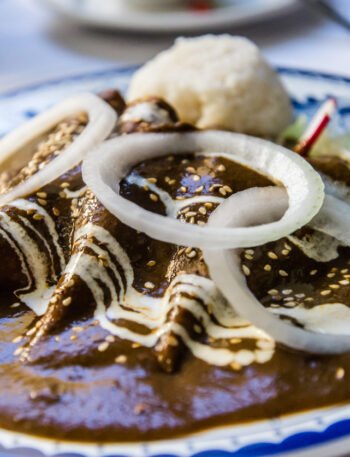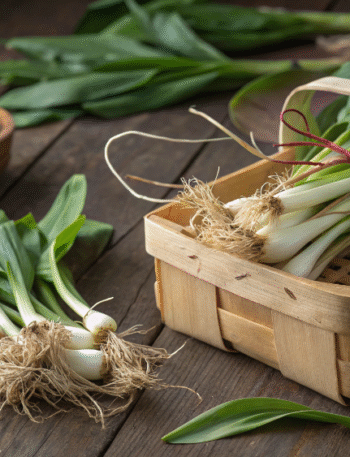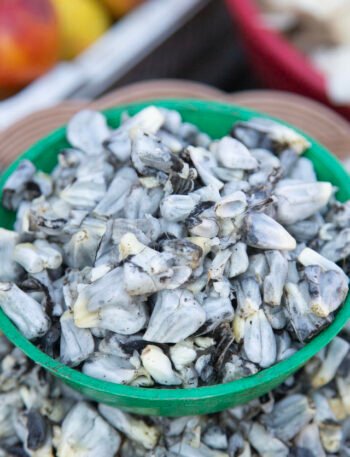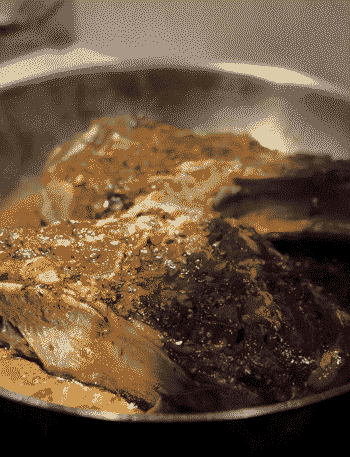Discover the bold herb that gives Mexican cuisine its earthy edge.
If you’ve ever cooked Mexican food beyond tacos and salsa, you may have come across a recipe that calls for an herb called epazote. It’s not as common as cilantro or oregano, but it’s been used in Mexican kitchens for hundreds of years.
Epazote (pronounced eh-pah-ZOH-teh) has a strong, unique smell that people either love or don’t care for. It’s mostly used in small amounts to add depth to foods like black beans, soups, and stews. It’s especially well-known in central and southern Mexico, where cooks often grow it in their gardens or find it fresh in local markets.
Although it might be new to some people outside of Latin America, epazote is an important part of traditional cooking and even has a long history of being used as a home remedy. Whether you’re an experienced chef or just learning to cook, it’s an herb worth knowing.
What Does Epazote Taste Like?
Epazote has a strong and unusual flavor. Some people say it smells like gasoline or paint when raw, but that doesn’t mean it tastes bad. When cooked, the flavor becomes more balanced. It’s sharp, earthy, and a little bitter, with a hint of something like anise or licorice.
Unlike herbs such as parsley or basil, epazote is not delicate or mild. A little goes a long way. It’s often added toward the end of cooking to keep its unique character, but it can also be simmered in longer recipes like stews or beans.
If you’ve ever tried fresh oregano or French tarragon, you might find epazote a little similar in strength, but it doesn’t taste the same. It has its own personality, and once you try it, you’ll recognize it right away in any dish.
How Epazote Is Used in Cooking
In Mexican cooking, epazote is often added to dishes where beans play a big role. Black beans are the most common example. Cooks add a sprig or two while the beans simmer. This doesn’t just add flavor. It’s also believed to help reduce gas, which is one reason the herb has stayed popular over time.
You’ll also find epazote in quesadillas, tamales, soups, and stews. It’s sometimes chopped and sprinkled into a dish at the last minute, but more often, it’s cooked in. A little heat helps mellow the strong taste while still keeping that bold, earthy quality.
Most recipes use fresh epazote, which has a brighter and stronger flavor than dried. If you can’t find it fresh, dried will work in a pinch, but you may need to use a bit more to get the same result.
In most cases, epazote is used alongside other strong ingredients like chilies, garlic, and onions. It’s not a background herb. It stands out, but when used correctly, it blends well into the overall flavor of traditional Mexican foods.
A Herb with Deep Roots in Mexican History
Epazote has been used in Mexico for hundreds of years. Long before modern kitchens and supermarkets, it was a part of everyday life for the Aztecs and Mayans. The name epazote comes from the Nahuatl word epazotl, which shows just how far back its use goes.
It wasn’t just for flavor. People also turned to epazote for its medicinal properties. One of the most common uses was for stomach problems, especially to help with digestion and to get rid of intestinal worms. In fact, its old English name, “wormseed,” comes from this traditional use.
Over time, epazote stayed important in rural and urban areas alike. It’s still easy to find growing wild in many parts of Mexico. People often pick it fresh from their gardens or even from the side of the road. While it’s no longer used as medicine as often as it once was, it remains a trusted ingredient in many households, passed down through generations.
Its strong flavor and long history make it more than just another herb. It’s a small part of Mexican culture that shows up in both the kitchen and the stories people tell.
Herbs That Are Similar to Epazote
Epazote doesn’t taste exactly like any other herb, but a few come close in strength or intensity. If you can’t find epazote or want to understand its flavor better, it helps to compare it to herbs you might already know.
Oregano is probably the closest in strength. Mexican oregano, in particular, has a bold, peppery flavor that can stand up to strong ingredients like chilies and beans. It’s not as bitter or sharp as epazote, but it adds depth in a similar way.
Tarragon has a slight licorice or anise flavor that some people notice in epazote. Tarragon is sweeter and more delicate, but both herbs have a flavor that’s hard to miss and easy to overdo.
Cilantro is another common Mexican herb, but it’s much fresher and milder. Cilantro is usually added at the end of cooking or served raw. Epazote is more often simmered to mellow it out. The two are not interchangeable, but they sometimes appear in the same dishes.
Some people also compare epazote to fennel greens or savory, but most agree that it really has a taste of its own. If you’re trying to replace it, no herb is perfect, but a mix of Mexican oregano and a little tarragon might get you close.
Where to Find Epazote (or How to Grow It Yourself)
Fresh epazote is usually sold in Latin American grocery stores or specialty markets. It’s often packed in small bunches, like parsley or cilantro. You might see it labeled as “wormseed” or even under its scientific name, Dysphania ambrosioides.
If you can’t find it fresh, some stores sell dried epazote in small plastic bags or jars. The flavor won’t be as strong, but it’s still useful in cooked dishes like beans or soups.
You can also grow epazote at home. It grows easily in warm climates and doesn’t need much care. The plant can get fairly large, and some people even consider it a weed because it spreads quickly. If you have a sunny spot in your yard or a large pot, you can grow your own and always have it on hand.
Once harvested, fresh epazote will last a few days in the fridge. To make it last longer, you can chop and freeze it in small portions.
Is Epazote Safe to Eat?
Epazote is safe when used in small amounts, especially in cooking. That’s how it has been used for generations in Mexican kitchens. Most recipes only call for a few leaves or a small sprig, which is more than enough to flavor a dish.
The concern comes from the fact that epazote contains a compound called ascaridole, which can be toxic in large doses. In the past, people used concentrated forms of epazote oil for treating intestinal worms, but that kind of use is not considered safe today. The oil is much stronger than the fresh herb and can cause serious side effects if taken improperly.
If you’re using it in food, there’s no need to worry. Just treat it like you would any strong herb. Don’t overdo it, and follow the amounts listed in recipes. As with any ingredient, if you’re pregnant or have health concerns, it’s best to check with a doctor before using unfamiliar herbs.
In short, epazote is safe to cook with, but it’s not something you want to experiment with in large amounts or use as medicine without guidance.
Final Thoughts
Epazote might not be as well-known as other herbs, but it plays an important role in Mexican cooking and culture. Its bold flavor can bring something special to dishes like beans, tamales, and stews, and its long history shows just how deeply rooted it is in tradition.
If you’re new to epazote, start small. Try it in black beans or a simple soup, and see how it changes the flavor. Some people take time to get used to it, while others enjoy it right away. Either way, it’s worth exploring, especially if you’re interested in authentic Mexican ingredients.
You don’t need to use much to notice a difference. That’s part of what makes epazote so unique. It’s strong, memorable, and unlike anything else in your spice rack.
🌿 Quick Growing Guide: How to Grow Epazote at Home
- Plant type: Hardy annual (can grow year-round in warm climates)
- Sunlight: Full sun is best
- Soil: Well-drained, not too rich
- Watering: Moderate — don’t let it dry out completely, but avoid soggy soil
- Spacing: Plants can get big, so give each one about 18 inches of space
- Harvesting: Pick young leaves before the plant flowers for the best flavor
Tip: It can spread easily, so consider growing it in a container if you don’t want it taking over your garden.
🤔 Did You Know?
- In English, epazote is sometimes called wormseed because it was used to treat intestinal worms
- The herb contains a natural compound called ascaridole, which is also found in some natural insect repellents
- In parts of Mexico, epazote is still added to herbal teas meant to calm the stomach
- Epazote’s name comes from Nahuatl, the language spoken by the Aztecs





